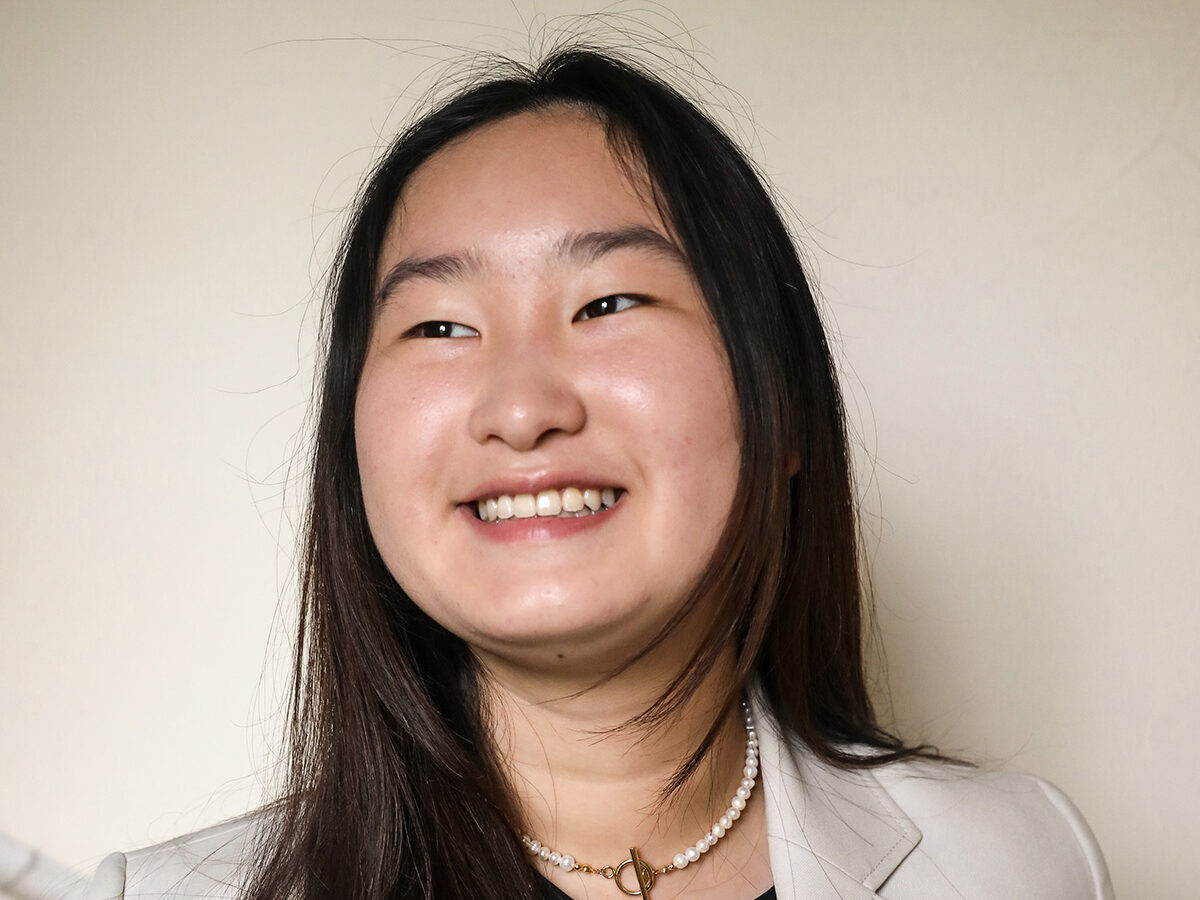Minseo Kim

Insomnia keeps Minseo Kim ’23 up at night, but she is sleeping fine. “I would start in the afternoon and just keep coding and fixing bugs,” she says. “Night would pass by and before I knew it, my mom would knock on the door and bring me green tea.” That coding was integral to DreamCatcher, a product Kim is co-developing that uses photoplethysmogram (PPG) data to track sleep.
Early in the pandemic, while attending classes from her home in Seongnam, South Korea, Kim became aware that her fellow Exonians and millions globally were struggling to get a good night’s sleep. With tech and design thinking in her blood — she has lived in tech hubs Silicon Valley and Seattle — Kim and a teammate began exploring a new way for people and their doctors to track sleep data as part of the POSCO ICT AI Youth Challenge.
Sleep is routinely monitored with an electrocardiogram (ECG), which tracks heart rate, heart rate variability and other health data. But it requires the user to wear multiple sensors that can make it difficult to sleep. A PPG, however, requires only a single sensor — think Apple watches and oximeters — though the data it provides aren’t as detailed. Using artificial intelligence, Kim and her teammate were able to “train the model” to estimate an ECG wave accurately from a PPG wave and provide detailed data on how well and how long the user slept.
They encapsulated the circuitry in a forehead sensor Kim designed using Blender, a computer-aided design program, and produced with a 3D printer. Through Bluetooth and an Android app the teammates developed, the sensor could submit data to the user’s phone. The app also could provide pink noise, a blend of sounds that have been proved to aid with sleep. Research shows that back-ground sounds can be disruptive during deep sleep, so the sensor could deliver a signal to the app to turn off the sounds when the user enters rapid eye movement (REM) sleep, the deepest stage.
The resulting paper received a Samsung Humantech Paper Award competition bronze medal in February 2022. Kim and her collaborator have a patent pending on the hybrid AI architecture they developed, a generative adversarial network and a convolutional neural network.
DreamCatcher isn’t Kim’s first use of AI and technology to respond to a health concern. In middle school, alarmed by the increase in suicide rates among her peers due to overwhelming academic stress, she developed a “mind lightening pen.” A combination of programming and heartbeat sensors that responds to an increase in stress level, the pen buzzes to remind the user to take a break from studying.
This summer, in addition to refining the DreamCatcher, Kim volunteered as chief technology officer for the South Korean branch of United Nations Volunteers and was an intern at the Way Maker School in Seongnam, helping to build a computer science curriculum that includes AI, emotion classification and empathy. “That got me thinking a lot about what it really means to care for someone else,” she says. “What does it mean to be non sibi? And what does it mean to incorporate that into technology? It’s about fully understanding the person and the problem, and finding the solution together.”
— Sarah Zobel
Editor’s note: This profile first appeared in the fall 2022 issue of The Exeter Bulletin.